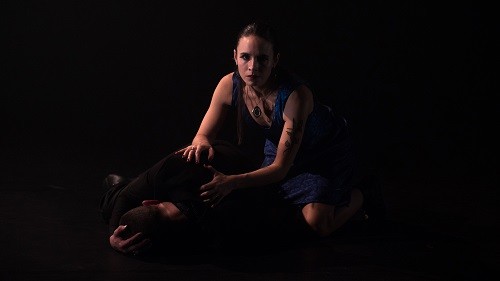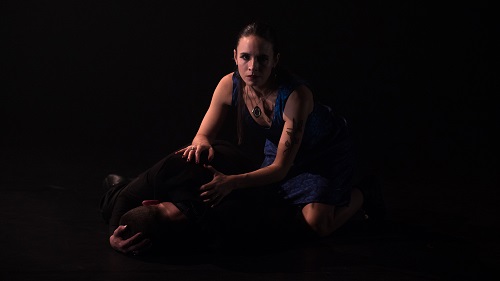 United Kingdom Mark Bruce Company’s Macbeth: Wilton’s Music Hall, London, 27.2.2018. (JO’D)
United Kingdom Mark Bruce Company’s Macbeth: Wilton’s Music Hall, London, 27.2.2018. (JO’D)

Cast:
Macbeth – Jonathan Goddard
Lady Macbeth – Eleanor Duval
Three Witches – Carina Howard, Hannah McGlashon, Daisy West
King Duncan – Stephen Berkeley-White
Daughter of Duncan – Carina Howard
Banquo – Jordi Calpe Serrats
Fleance, Banquo’s Son – Dominic Rocca
Macduff – Christopher Thomas
Lady Macduff – Daisy West
Production:
Choreographer and Director – Mark Bruce
Set Designer – Phil Eddolls
Lighting Designer – Guy Hoare
Costume Designer – Dorothee Brodrück
Props – Scott Thompson, Paul Boswell, Rachel Macleay
Sound Designer – Chris Samuels
After the success of their dance-theatre version of Dracula at Wilton’s Music Hall in 2013, choreographer Mark Bruce and company appeared at the same venue in 2016 with a version of ‘The Odyssey’ that was somewhat less successful. Bruce’s Victorian ‘penny dreadful’ aesthetic fitted Bram Stoker’s tale of the vampire count like a glove. Homer’s epic poem was not treated with the same sureness of tone, particularly with regard to the music used. Macbeth, with music in the main by Arvo Pärt, is a return to form. It is also a return to Jonathan Goddard, the dancer who won awards for the role of Dracula but who was unable to perform in Odyssey due to an injury.
If Mark Bruce has once again created a dark and violent world, it is one that reflects the atmosphere of Shakespeare’s play. There is also a reference to present-day terrorist attacks in the balaclavas and daggers of the opening battle scene (performed to the Kyrie from Pärt’s Berliner Messe). On occasion, the violence is excessive. Before the three witches present the regicidal Macbeth with a vision of his downfall, they each hit him on the head with a hammer. For the most part, though, this is a lean and inventive production that shows only what it has to show.
The focus is on Macbeth and Lady Macbeth. Jonathan Goddard, a dancer whose movements seem always to depart from and return to a perfect but invisible vertical axis, is a heart-rending Macbeth who is seen at one point vulnerably shirtless. With expressive arms, expressive eyes and movement that flows from ‘engaged’ core muscles, Eleanor Duval suggests a hidden pain behind Lady Macbeth’s ambition. Both characters are ruthless, but the relationship between them is a tender one. Mark Bruce’s fluid choreography can show the dancers bent over and crouching, or gesturing towards the upward-directed arabesque, attitude and pas jeté of classical ballet. In Macbeth there are also references to the Scottish reel, for a group of dancers and for the central couple during their first duet.
The lack of words means that events or actions referred to in the play have to be acted out on the stage. This sometimes slows the pace. At the end of the first half, Lady Macbeth has only just crowned her husband King of Scotland. Despite this, the choreographer is in control of the overall narrative. In a moving scene towards the end, Lady Macduff shows her husband the body of their murdered child. This prompts King Duncan’s daughter (in this version he has a daughter) to take up arms against Macbeth. Her dress of sky-blue satin suggests that she is something different from the Macbeths, who wear black, or burgundy, or dark blue. But at the end of the piece Duncan’s daughter has killed her adversary as he killed her father and, holding his head in a box, looks at the audience in a way that clearly expresses Shakespeare’s ‘Fair is foul, and foul is fair’ paradox. Hers is just another battle that has been ‘lost and won’.
John O’Dwyer
